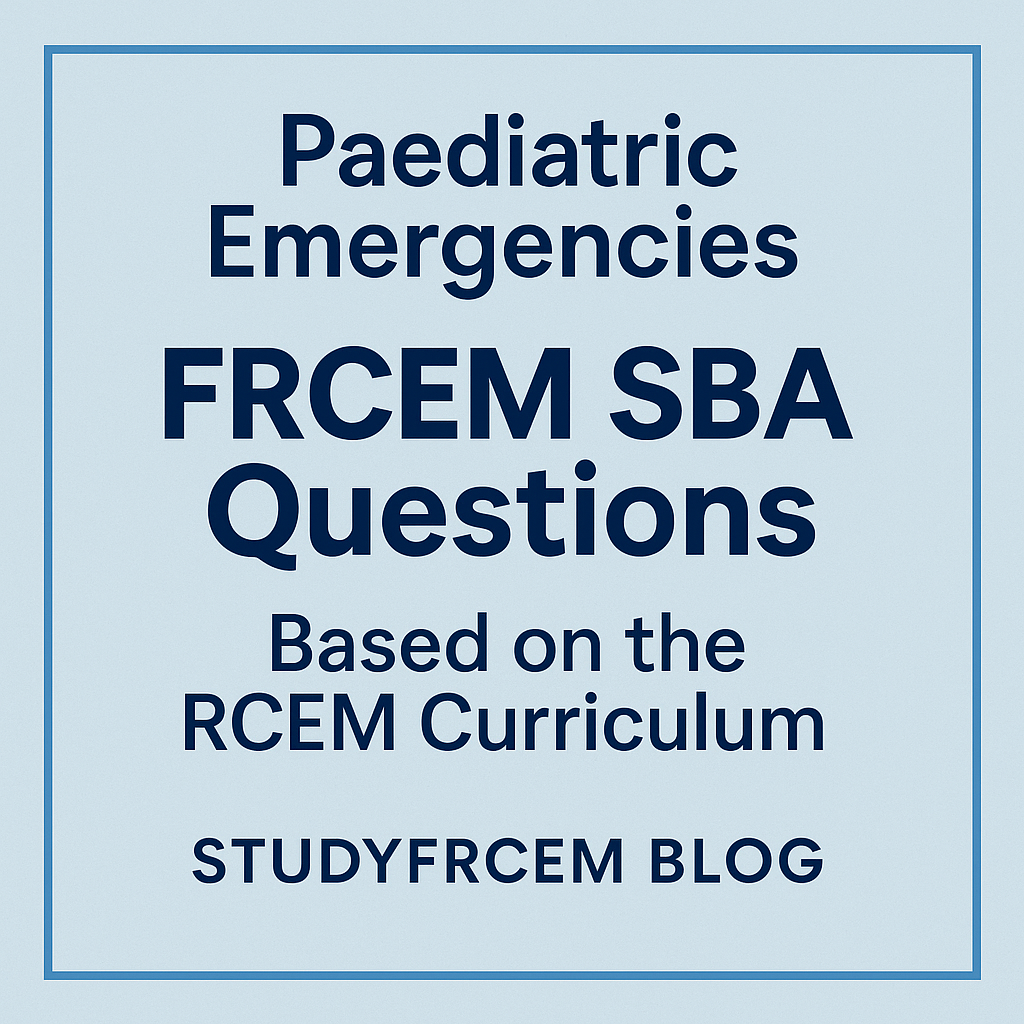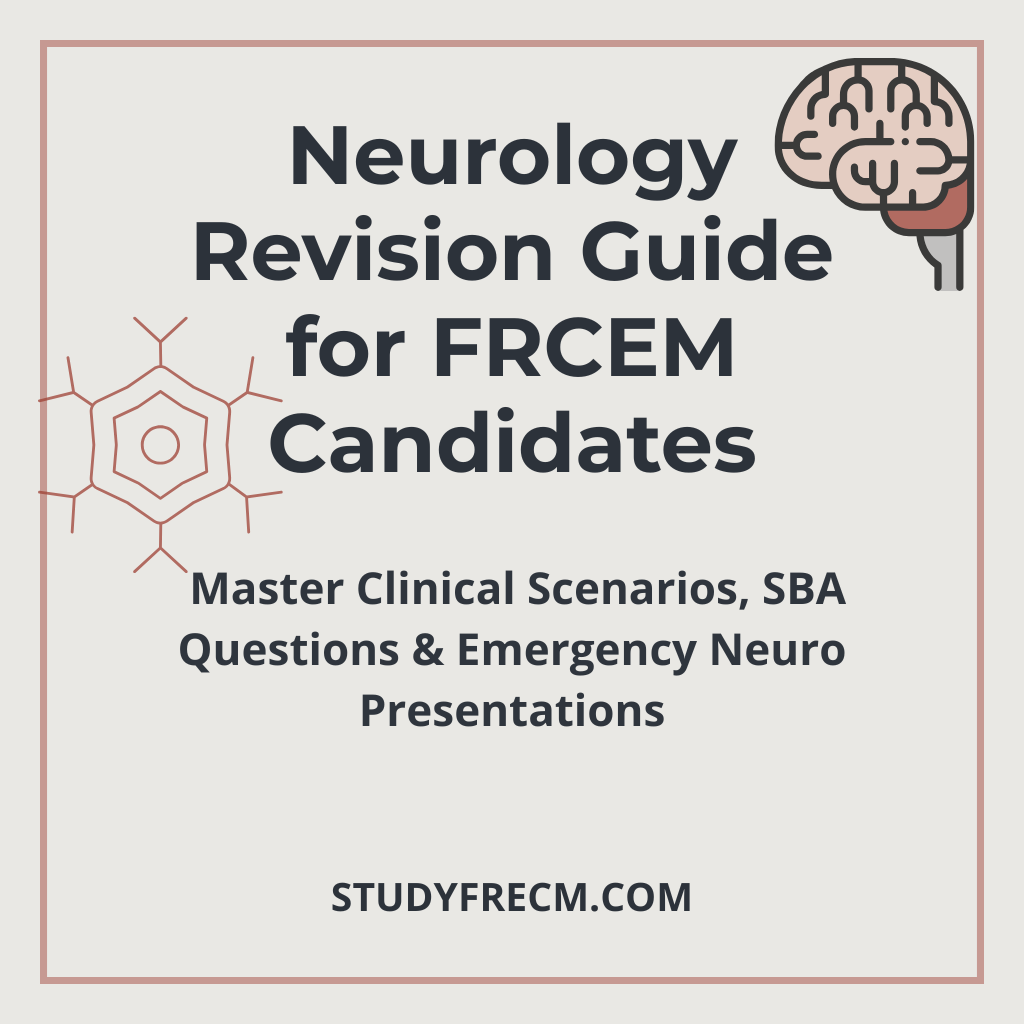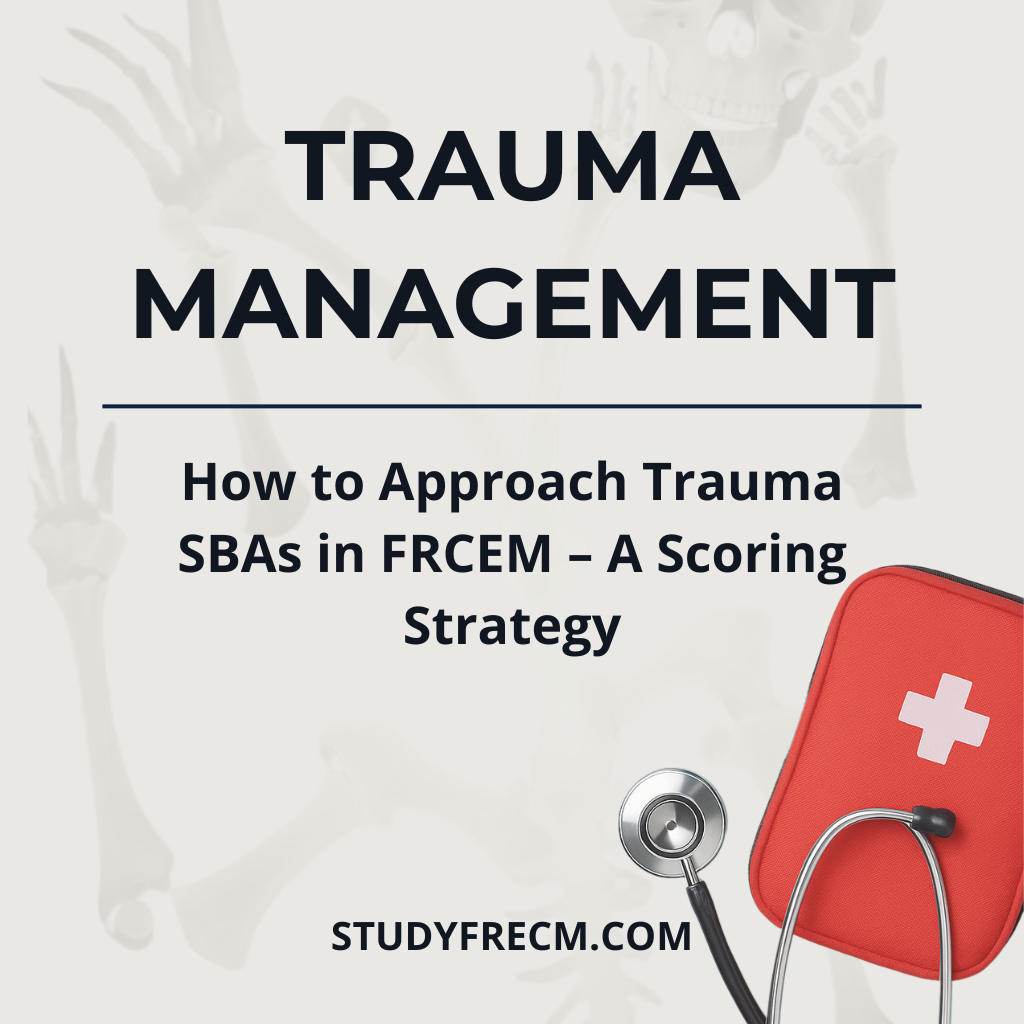Preparing for the FRCEM Single Best Answer (SBA) examination can be daunting, especially when it comes to paediatrics. The RCEM 2021 curriculum places a strong emphasis on recognising and managing critically ill children — a high-stakes, high-anxiety topic for many candidates.
In this blog post, we’ll walk through how to approach paediatric emergencies in the SBA exam, common pitfalls, high-yield revision strategies, and a few sample questions crafted in line with the RCEM curriculum. Whether you're sitting the FRCEM Primary or Intermediate exam, this guide is designed to sharpen your clinical reasoning and exam technique.
Why Paediatric Emergencies Matter in the FRCEM Exam
Paediatrics makes up a substantial portion of the FRCEM SBA exam, reflecting real-world emergency department challenges. Children present differently from adults, often deteriorate rapidly, and require a structured approach to assessment and resuscitation.
Key areas of focus include:
- Febrile child and sepsis
- Respiratory distress (e.g., bronchiolitis, croup, asthma)
- Seizures and altered consciousness
- Non-accidental injury
- Safeguarding concerns
- Fluid resuscitation and shock
Common Pitfalls in Paediatric SBA Questions
1. Failure to adjust ABCDE for paediatrics
Remember, normal vitals vary by age group. Misjudging hypotension thresholds or respiratory rates can steer you toward the wrong answer.
2. Overlooking safeguarding clues
Unexplained bruises, delay in seeking care, or inconsistent histories are red flags. Questions may test your ability to escalate appropriately.
3. Neglecting age-specific treatments
Drug doses and fluid calculations in children are weight-based. Questions often hinge on whether candidates can apply this safely and quickly.
How to Approach Paediatric SBA Questions
- Always check the age or weight: Paediatric vitals and dosing depend entirely on these.
- Work through ABC systematically: Don’t rush to the most dramatic diagnosis without ruling out airway or breathing issues.
- Use pattern recognition: Classic presentations (e.g., barking cough in croup, tripoding in epiglottitis) often hint at the diagnosis.
Sample SBA Questions: Paediatric Emergencies
Here are two RCEM-style SBA questions to test your knowledge:
Q1:
A 3-year-old boy is brought to ED with 6 days of fever and a new rash. He is irritable and has bilateral non-purulent conjunctivitis, cracked lips, and a desquamating rash on his hands.
Vitals:
- HR: 130
- RR: 26
- Temp: 38.5°C
- BP: 90/55
- SpO₂: 98% on air
What is the most appropriate next step?
A. Administer high-dose IV methylprednisolone
B. Perform lumbar puncture
C. Start IV immunoglobulin
D. Discharge with safety-netting
E. Request throat swab and await results
✅ Correct Answer: C — Start IV immunoglobulin
This is classic Kawasaki disease. The question hints at systemic inflammation and mucocutaneous involvement. IVIG within 10 days reduces coronary artery aneurysm risk.
Q2:
A 5-week-old baby presents with poor feeding, lethargy, and vomiting. On examination, the anterior fontanelle is full, capillary refill is 4 seconds, and the baby is floppy.
Vitals:
- HR: 180
- RR: 50
- Temp: 35.8°C
- BP: 65/40
- SpO₂: 97%
Which of the following is the most likely diagnosis?
A. Viral gastroenteritis
B. Bronchiolitis
C. Meningitis
D. Gastro-oesophageal reflux
E. Pyloric stenosis
✅ Correct Answer: C — Meningitis
Lethargy, poor feeding, hypotonia, and hypothermia are classic signs of serious bacterial infection in neonates. The full fontanelle and poor perfusion further support this.
High-Yield Revision Tips
- Use age-based vital sign charts (memorise red flags).
- Practise weight-based drug calculations (e.g., adrenaline, fluid boluses).
- Revise ATLS and APLS principles – both are tested in SBA format.
- Work through past paper question banks with explanations, not just answers.
- Collaborate with colleagues — explaining concepts improves retention.
Conclusion: Be Exam-Ready, Clinically Sharp
Paediatric emergencies are a core part of your FRCEM preparation and your daily ED practice. Developing a solid, pattern-based approach to paediatric assessment — backed by knowledge of the curriculum — will not only help you pass the exam but also manage sick children with confidence and clarity.
Keep practising, revise systematically, and remember: no one ever regrets overpreparing for paediatrics.






